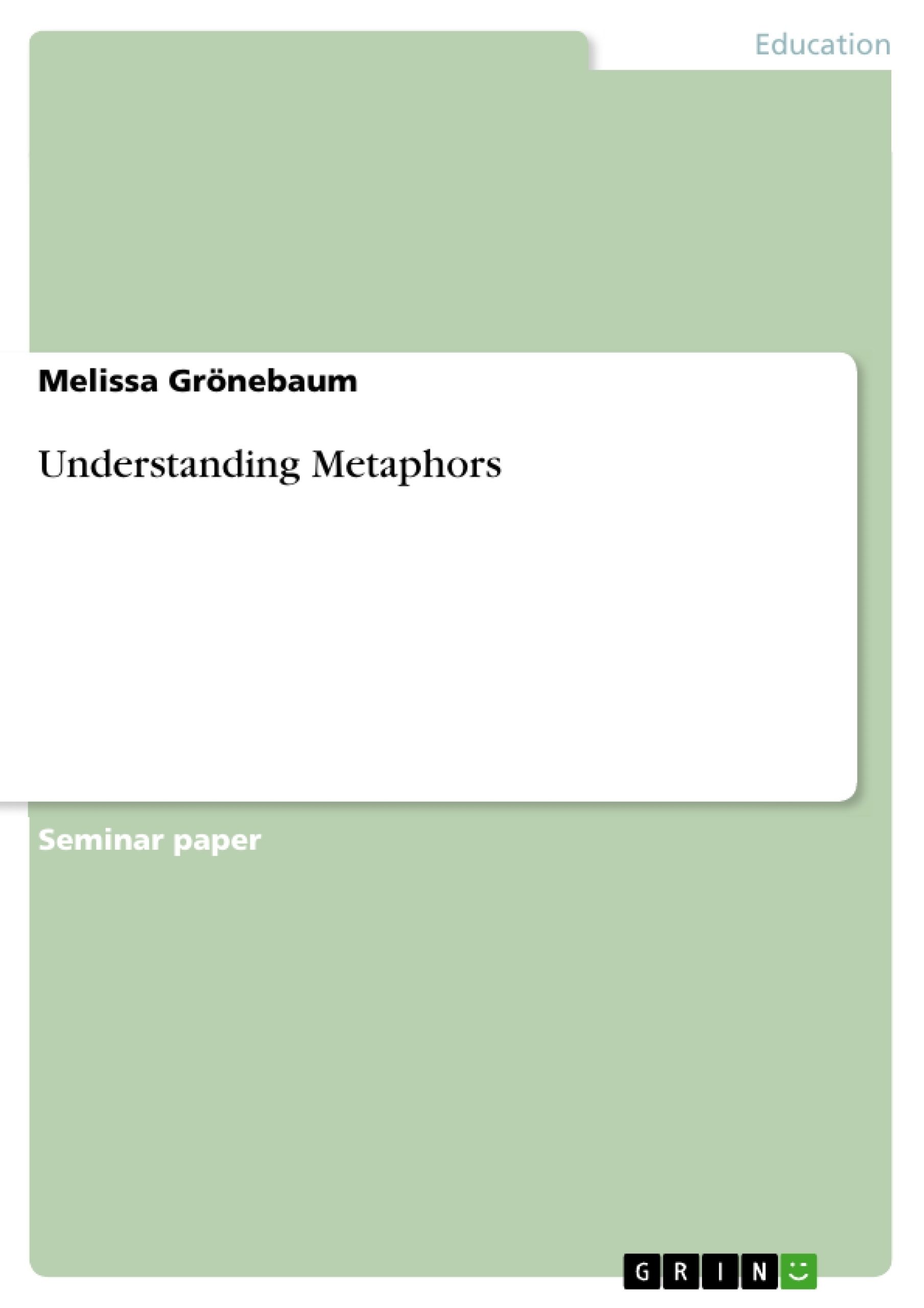“Metaphor has a long and controversial history, going back at least to the views of Aristotle, who spoke both of metaphor’s brilliance and dangers. However, discussions of metaphor continued to be the realm of philosophers and poets until the birth of disciplines of linguistics and verbal learning.” [Mey: 1676]
As time went by, more and more researchers showed their interest in the mysterious topic of metaphor and started to carry on researches. While Aristotle limited metaphors to four types, which are (1) genus for species (e.g. “my ship stands here”), (2) species for genus (e.g. “ten thousand noble deeds has Odysseus accomplished”), (3) species to species (“drawing off the life with bonze” & “cutting with slender-edges bronze”) and (4) analogy (‘b’ to ‘a’ as ‘d’ is to ‘c’: e.g. “the day’s old age” & “life’s sunset”) [comp. Pramling], subsequent researchers came up with several new theories and undertook many studies to support their ideas concerning the question of how human beings are able to understand metaphors and which areas of the brain are involved in processing metaphorical data. The publication of Lakoff and Johnson’s work in 1980 changed the research concerning metaphors significantly and shifted it to a search for general cognitive principles. The new idea was that „metaphor is largely a matter of thought“. [Hadl: 27]
Inhaltsverzeichnis (Table of Contents)
- Introduction
- Metaphors
- Processing nonliteral language
- Standard pragmatic model: Sequential processing
- The direct Access view: Context-Dependent-Hypothesis
- Graded salience hypothesis
- Testing traditional hypotheses
- The role of hemispheres
- Questioning the special role of the right hemisphere
- Repetitive Transcranial Magnetic Stimulation
- Visual Half-Field Priming
- Neuroimaging
- Recent research
- Conclusion
- Bibliography
Zielsetzung und Themenschwerpunkte (Objectives and Key Themes)
This paper aims to provide an overview of the research into the processing of metaphors, focusing on the role of the human brain. The paper examines the history of the research, explores the various theories of metaphorical understanding, and examines current research findings. Key themes of the paper include:- The nature of metaphor and its role in language and cognition
- Theories of metaphorical understanding, including the standard pragmatic model, the direct access view, and the graded salience hypothesis
- The role of the brain in processing metaphors, particularly the potential role of the right hemisphere
- Recent research findings and potential future directions for the field
Zusammenfassung der Kapitel (Chapter Summaries)
The introduction delves into the history of metaphor research, tracing its evolution from the philosophical realm of Aristotle to the contemporary field of linguistics and cognitive science. It highlights the shift in focus from identifying types of metaphors to understanding the cognitive processes involved in their comprehension. The chapter emphasizes the everyday nature of metaphors and the challenge of interpreting their meaning, particularly with complex examples. Chapter 2 delves into the concept of metaphors themselves, exploring different perspectives on their nature. The traditional view of metaphors as linguistic phenomena based on similarities is contrasted with Lakoff and Johnson's cognitive linguistic view, which emphasizes their conceptual and everyday function in human thinking. The chapter discusses the difficulty in defining metaphors precisely, as they encompass a wide range of figurative language, including idioms and conventionalized expressions. Chapter 3 examines three prominent theories of non-literal language processing: the standard pragmatic model, the direct access view, and the graded salience hypothesis. The standard pragmatic model proposes a sequential processing approach, where literal meaning is considered first and then metaphorical interpretation is invoked if necessary. The direct access view argues for the simultaneous activation of both literal and metaphorical meanings, influenced by context. The graded salience hypothesis suggests that different interpretations are activated with varying levels of strength depending on their prominence and contextual cues. Chapter 4 delves into the role of the hemispheres in metaphor processing. It explores the long-held belief that the right hemisphere is specialized for figurative language comprehension, questioning whether this specialization truly exists. The chapter discusses various methods used to investigate the brain's role, including repetitive transcranial magnetic stimulation, visual half-field priming, and neuroimaging.
Schlüsselwörter (Keywords)
This paper focuses on the areas of metaphor, cognitive linguistics, figurative language processing, brain function, hemispheric specialization, and experimental research methods.- Arbeit zitieren
- Melissa Grönebaum (Autor:in), 2012, Understanding Metaphors, München, GRIN Verlag, https://www.grin.com/document/268372



